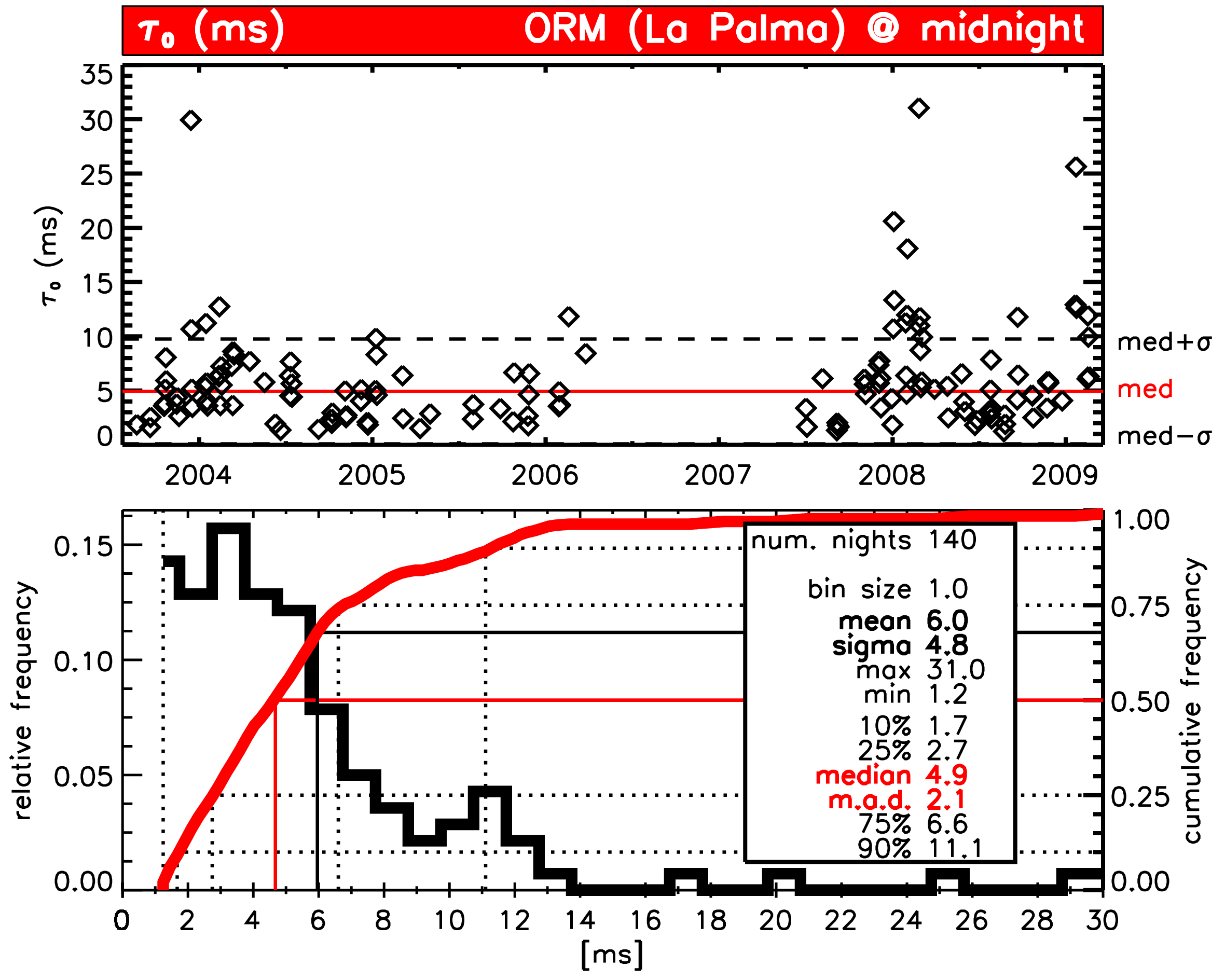The coherence time (τ0) is the time lapse that the light crossing the Earth atmosphere maintains a near-constant phase relationship, both temporally and spatially.
The τ0 is one of the relevant atmospheric optical parameters for the design of adaptive optics systems and other high resolution techniques, being directly related with the band width and the stability requirements.
A proper retrieval of τ0 implies the combination of vertical turbulence profiles, and wind profiles. For example, gSCIDAR or MASS or radiosounding balloons, among others, are valid techniques for the turbulence, and radiosounding balloons or climate reanalysis databases for the vertical wind.
Roque de los Muchachos Observatory (ORM)
Castro-Almazan et al (2017) (note: force HTTP in your browser) studied 133 nights (covering 5 years) of gSCIDAR turbulence profiles obtained at the ORM and wind profiles from simultaneous operational radiosounding balloons launched from the neighbour island of Tenerife (∼155 km distant) at midnight. The average integrated velocity of the turbulence (V0) was obtained for each night. The mean and median τ0 were 6.0 ms and 4.9 ms, respectively, with quartiles P25=2.9 ms and P75=6.5 ms. The same values for V0 are mean=9.7 m/s, median=9.5 m/s, P25=6.2 m/s and P75=12.4 m/s, respectively.

Vazquez-Ramio et al (2012) performed a similar analyses at ORM using ~600 hours (ranging one full year) of night time observations of turbulence profiles using MASS, and wind profiles from the GDAS (Global Data Assimilation System) of the US National Oceanic and Atmospheric Administration (NOAA) reanalysis (horizontal resolution ~1 deg, i.e ~111 km in latitude, ~97 km in longitude; temporal resolution 3h). The average and median τ0 were 6.5 ms and 5.6 ms, respectively, with quartiles P25=3.7 ms and P75=8.2 ms.

An early campaign (Vernin et al, 1994) at the ORM using local radiosondes (4 flights) equiped with microthermal and wind sensors gave a mean τ0 of 6.6 ms and median of 6.3 ms.
Teide Observatory (OT)
Garcia-Lorenzo et al (2011) obtained mean and median τ0 of 6.5 ms and 5.5 ms, respectively. The same values for V0 are mean=9.6 m/s, median=9.4 m/s. The authors combined 100 nights of gSCIDAR turbulence profiles with wind profiles from simultaneous operational radiosounding balloons.
